Most clients I work with that run a startup SaaS company often struggle figuring out where to start executing an SEO content strategy that puts them in front of potential customers.
What’s common is that they’ll start by brainstorming keywords with some search volume and use those terms in the H1 tags of their service pages. Maybe they’ll have a few blog posts published but they know they’re not optimized for search engines or written as well as they could be…
But since they barely see any results from their SEO content efforts, they’ll continue to rely on referrals and sometimes paid ads to bring in leads, which they know isn’t a sustainable strategy for long-term growth.
Taking all of this into account, what Rezi needed was someone that could drive growth through organic means.
In this article, you’ll learn how I came up with relevant content ideas, how I conducted keyword research, and how I approached the content writing process – all of which led to sharp increases in organic traffic, user signups, and paying customers.
TL;DR: the content strategy works by building topical authority around your product’s unique selling points in correlation to the customer’s perspective on how you’re solving the problem they’re trying to solve.
Important Note: This article has been updated but was first published on March 31st, 2022, covering my work with Rezi from 2021-2022.
Table of Contents
What Is Rezi?
Rezi is an AI resume builder designed to help job seekers create the perfect CV that beats the applicant tracking system (ATS).
They started out as a weekend project in 2015 before launching as a software as a service (SaaS) startup company in 2019. But even though they’ve been around for a few years, their website had little to no organic traffic.
In fact, they didn’t have the following:
- Content strategy
- Editorial calendar
- SEO strategy
3 Factors to Prioritize for Content Ideas That Drive User Signups
Customer-First Approach
Your customers come first. That means writing for your audience by prioritizing topics that address their goals and pain points. This also means prioritizing the user experience since you’re focusing on creating content that’s tailored to a specific person.
Product-Led Approach
The main driving force behind business growth is having a good product. Therefore, it makes sense to create content where you can communicate how the benefits of your solution align with your ideal customer’s best interests; this is what leads to user signups.
There is no business without a good product or service in the first place. So, understand why people choose to buy your product and the problems that your product solves.
SEO
Lastly, the SEO lens focuses on ranking higher on search engines. In terms of content writing, this requires a few things:
- Competitive analysis
- Keyword research
- Matching the search intent
However, the content strategy is built using the needs of your customers as the foundation.
The reason SEO comes last in this process is this: what’s more important than creating content that ranks is creating content that’s actually valuable for your target audience since this is what brings them a step closer to becoming paying customers.
If the content isn’t relevant to your target audience whatsoever but drives traffic by ranking for a keyword with a high search volume, that traffic is almost meaningless because it won’t lead to anything further. It’s pointless – like buying a girl drinks at a club when she has no real interest in getting to know you.
Higher search rankings happen as a natural consequence of serving your audience well and putting the user experience first.
Being able to create the best content that’s tailored to a specific audience allows you to put the user experience first rather than the algorithms, which is what Google wants you to do since they would want to rank content that’s most useful to the searcher.
The Content Strategy Framework
1. Understand Customer Pain Points
The first step is to understand who your ideal customers are.
In other words, who’s the type of person that’s likely to become a paying customer of the product? What does that person look like? To find out and get a better idea, I began with a quadrant that outlines a few basic details about this customer:
- Frustrations
- Fears
- Goals
- Aspirations
Now, here’s where I found the information to complete this outline:
- Friends (considering there were people I knew applying for jobs, it made sense to talk to them about resumes and cover letters; the best part about this is that I was able to have a straightforward conversation with pretty much no filters)
- Quora
- Product reviews, e.g. TrustPilot
2. Understand Product USPs
Consider the following:
- What new experiences does your product give to customers?
- How does your product solve a particular problem?
- Why is your product the best in the market?
- What’s your unique value proposition?
If you’re going to write about any product or service, you need to know how they work as well as how they’re perceived and used by customers.
3. Brainstorm Content Ideas Based on Step #1 and #2
After following the previous steps, you’ll have the ammunition to come up with content ideas that are relevant to your customers and your product. Hence, you’re more likely to create content that drives leads by getting in front of the right people.
Start by looking at recurring words or phrases from the previous steps. The process is a bit messy here because I’d use Google Sheets to note a bunch of customer pain point-related topic ideas where I could mention Rezi’s product as a solution.
From there, keep brainstorming until you’re satisfied that you have enough topic ideas to look into. For me, 12 content ideas is a good minimum to aim for.
You could also come up with content ideas based on what people are talking about on social media platforms or relevant online communities:
- Quora
4. Narrow Down Your Topic Ideas Into Keywords
Turn your content topic ideas into keywords.
First, gather seed keywords based on recurring words or phrases that you see from the previous steps. Once you found those seed keywords, break them down into long-tail keyword phrases that you could cover.
So, here’s an example.
First with Rezi, I noticed that their initial positioning was helping job seekers create a resume that gets past the applicant tracking system. Therefore, rather than starting with general resume topics, I first focused on creating content related to this aspect – ATS resumes.
Turns out, the keyword “ATS resume” had a pretty decent search volume. Aside from the potential traffic that we could get, what mattered more was the fact that this keyword was relevant to Rezi’s product offering. So it wouldn’t be too difficult or unnatural to mention Rezi’s product in some of these pieces of content.
Once I knew what the seed keyword was, I looked into other related topics to make this a content cluster strategy. Here’s what I used to help me with this part of the process:
- Google SERP
- SEMrush
- Ubersuggest
Google SERP
Enter the seed keyword into Google to see what comes up.
First, look at other keyword suggestions on the search bar as shown below.

Second, look at the footer of the SERP to get more suggestions and ideas.

Lastly, look at the ‘People Also Ask’ boxes to see what type of questions people have on the topic.

SEMrush
Enter the seed keyword into the search bar.

Scroll down until you see the 3 columns:
- Keyword variations
- Questions
- Related keywords

Then I’d basically look into each of these and see if there are any keywords that we could make an interesting piece of content on.
Ubersuggest
Enter the seed keyword into the search bar.

Click on the “keyword ideas” tab.
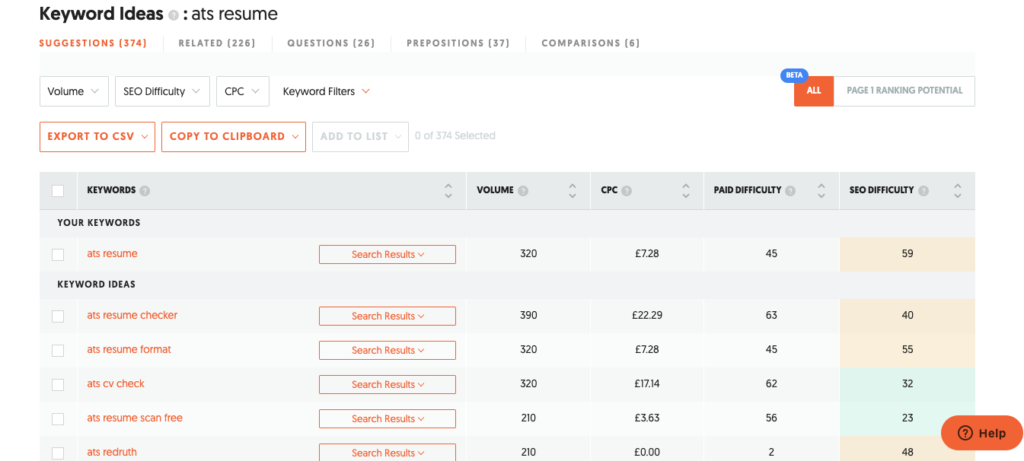
Go through a couple of these to see if there are any keywords that you could create an interesting piece of content on. You can also check out the other tabs.
5. Competitor Analysis
Once you’ve got a couple of keywords listed, analyze your competitors to see if there are any relevant keyword opportunities.
Here’s how you find out who your competitors are:
- Ask your client who their biggest and direct competitors are in the industry
- See who keeps coming up on the SERP for the keywords and content ideas you’ve brainstormed
Competitor analysis is useful for finding out what’s working well and if there are any gaps that you could fill.
6. Optimize Existing Blog Posts
Now before actually getting started on writing a new piece of content, I first look at what’s already been published and whether they could be optimised to perform better.
There were only around 5 blog posts when we started working together. Although SEO is a long-term strategy, one way to get traction faster is to update old or existing blog posts by doing a few things:
- Make the headline more engaging
- Ensure that the article meets the search intent
- Add new relevant sections answering questions the user has on the topic
- Improve content readability and format with H2s and H3s
- Project a tone of voice
- Remove fluff
This strategy also works on top-performing content as well as content that sits on the second page of Google.
The very first article I worked on was a content refresh. In other words, it was an old blog post that had the potential to drive more traffic and engagement. After updating this, it became one of the top pages on their website (2021), i.e. “ATS resume examples”.
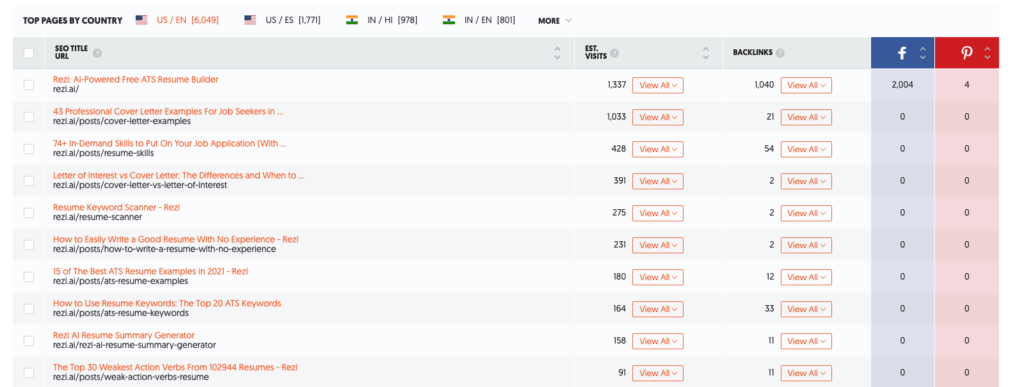
The Content Creation Framework
Great, we’ve done our homework. Now I’ll go through how I executed the strategy and created SEO content for Rezi.
1. SERP Analysis
A SERP analysis is when you analyse what’s already ranking on the search results page for your target keyword.
As I was going through the different pieces of content ranked on the first page of Google, here are the sort of questions I asked myself:
- What is the problem the reader is trying to solve?
- What’s the underlying motive and goal behind each search?
- What are the main things people are talking about?
- How have your competitors approached the topic?
It’s also worth looking at the second page of the search results to get more insight into what’s been covered and what hasn’t. For instance, are there any subtle details from the headlines and meta descriptions that tell you about the searcher intent?
If there are forums such as Reddit or Quora that are ranked on the first page, it’s one indicator that not enough information has been covered for the keywords you’re targeting.
The point here is to understand the essential things you need to cover as well as gaps that you could fill to create a better piece of content than what’s already out there.
Tips to Rank for Featured Snippets
Here’s a few examples of featured snippets I achieved rankings for.


Here’s my process below to rank for featured snippets:
- Enter your target keyword into Google
- Check the top questions in the “People Also Ask” section
- Review the answer and see if you can provide a better answer; if the answer is yes, proceed to the next step
- Click on the website that answers that question
- Review the structure of the specific part of their article that ranks for that featured snippet, e.g. what does the header say, did they use a H2 or H3, and how many paragraphs were used?
- Write a better answer using a similar structure as your competitor in your article
I have to admit though: I didn’t always follow the process above.
Sometimes, I’d rank for featured snippets or at the top of Google for certain keywords without even intentionally targeting them in the first place.
How did that work?
By giving users the answers they wanted.
In other words, by putting the reader first and simply prioritizing their search intent.
Don’t be that person who starts articles or blog posts by telling the reader that “in this modern world, it’s more important than ever to have a resume that stands out in this competitive landscape.”
Because in reality, no one gives a shit. It’s pretty obvious that the job market is competitive; they don’t need to be reminded of something they already know.
We’re all selfish online – when we search for something, we want straight answers.
(And that’s one reason they say people use AI instead of SEO: I don’t blame them, because there’s too much fluff and not enough straight answers.)
If you serve your user by addressing the search intent immediately and throughout your article by providing them with the answers they’ve been looking for, then the natural consequence is that they’ll enjoy your content.
And once algorithms see that your article is naturally rich with keywords and that website visitors are reacting well to your content, they’ll want to rank you higher because remember, Google ultimately wants to rank content that’s most useful to searchers, not content that’s flooded with keywords unnaturally.
2. Approach the Topic From a Different Angle
Most times, the SEO content that ranks on the first page of Google is generic.
I don’t mean to say they’re entirely trash. It’s just that they’re usually really similar to one another.
With that in mind, one of the reasons your biggest competitors are ranking high isn’t always because the content is exceptional. But because they have high domain authority, which means the website is more credible to the Google algorithm.
However, it doesn’t conclude that the content quality is the best. That’s the opening for small businesses and startup companies for competitive keywords.
Rather than resorting to doing the same thing as everyone else, tackle the topic from a different angle. Add something new to the conversation. This makes your blog posts stand out since you’re meeting the needs of your audience in a more interesting way by offering a new perspective.
This is the same I did to achieve the featured rankings as well as page 1 rankings as shown in the previous step.
3. Outline What You’re Going to Cover in Your Blog Post
Using the points you’ve found from the previous steps, make an outline of what your article is going to cover.
- What are the main sections you need to include?
- Are there relevant subtopics no one else has talked about?
- Do you need any data or quotes to support a statement?
- Are there any Google feature snippets that you could outrank a competitor for?
- Is there any particular point you could expand on that others haven’t?
- How are you going to get the reader a step closer to becoming a user?
Starting with an outline helps you jot all your thoughts and ideas down. When you have this in front of you instead of keeping everything in your head, articulating your message becomes easier and you won’t have to keep constantly pausing or going back and forth.
4. Draft the Content
Once you’ve finished making the content outline, it’s time to draft those ideas into sentences and paragraphs.
Don’t worry about making it perfect. The purpose of this phase of the writing process is to complete the first version of your blog post. Compared to the final result after editing and reading through the article a few times, it’s usually shit.
5. Use Product-Led Storytelling
Consider how you could showcase how your product solves the underlying problem that the reader is looking to solve.
Ask yourself:
- How can you introduce your product or service offering?
- Does it fit in naturally with the topic you’re talking about?
- What’s the core problem you could teach them to solve using your software?
However, this only works by putting the user’s needs first by making it a priority to educate and inform them of a solution that actually works. Therefore, you won’t be shoving your product down the reader’s throat because you’re showing them a practical way to solve a problem that they want to solve.
If your reader is getting value from your article since you’re answering their questions and then you show them the value of your product in a non-salesy way by making it a priority to educate them rather than trying to sell them, it’s what leads to signups. As long as you answer the search intent, they’re not going to shit on your article for bringing up your product.
I’ll give you an example.
If the reader wants to know whether a cover letter is necessary or not, give them a straight answer. No one wants to click on an article and read about the history of cover letters; what they would want to read is whether or not a cover letter is needed and the reasons why.
After answering the questions they have, bringing up your product is okay because you’ve earned their trust. And when you showcase how your product works, it does 2 things:
- Communicates to the reader that you have an actual solution that works
- Makes the reader aware that you have a solution so whenever they’re ready to buy, your product will come to mind
Not only are you providing readers with genuine information and value. But, you’re showing them how your product works, which can lead to user signups.
6. Edit and Finalize
The final part of content creation is editing each post before publishing them. Unlike drafting the blog and brainstorming ideas, this is where you perfect it.
Above all, check that you’ve met the search intent. Besides that, check for the following:
- Typos
- Internal links
- Data and statistics
- Quotes
- Writing tone
If more information is needed, try to add more relevant details. On the other hand, look for filler words and phrases to cut down the fluff. What makes a good blog post is one that gives readers the answers that they’re looking for in a way they resonate with in the shortest amount of time possible.
The Fruits of Our Labour
Now’s the moment you’ve been waiting for… The results.
I’ll share what Rezi achieved with the content produced in terms of organic traffic and user signups.
Organic Traffic Results
At the end of the first month of the project, we reached 9,900 new website visitors.

Screenshot taken from SEMrush
As you can see from the data, before we started working together, there was virtually no traffic coming to the website. The traction in March came in by updating the old blog posts and sharing them on LinkedIn and Reddit.
3 months later, we reached 56,300 website visitors: an increase in organic traffic by 468.69%.

Screenshot taken from SEMrush
From March to June, the website traffic increased by 468.69%.
The results gained from search engines were quite impressive. At its peak, we reached 73,300 website visitors in October.

If you’re curious about how many keywords were ranking in the top 10 positions of the search results, i.e. the first page of Google, please refer to the bar charts below.

Keyword rankings in March

Keyword rankings in June

Keyword rankings in July
Impressions + Clickthrough Rates
Here’s how the impression and clickthrough rates looked when working with Rezi on SEO content for 5 months: from March 2021 to August 2021.

Screenshot taken from Google Search Console.
And in case you’re curious about the long-term results, feel free to compare the screenshot above to the screenshot below which showcases the impression and clickthrough rates for the same months in 2022, 1 year later.
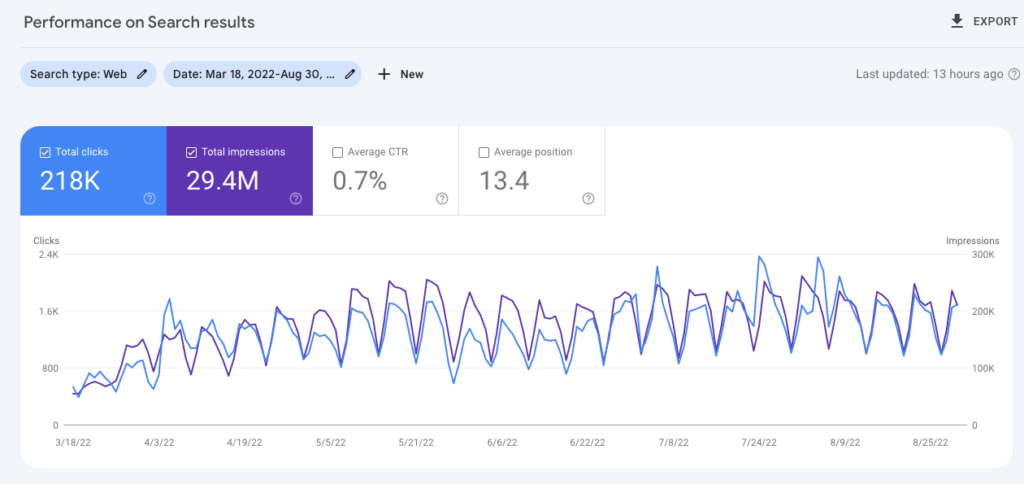
Screenshot taken from Google Search Console.
User Signup Rates
Here’s a look into Google Analytics which shows the conversion rates through organic search.
- Conversion rates from March 31st 2021 to April 30th 2021 = 29.23% from organic search.
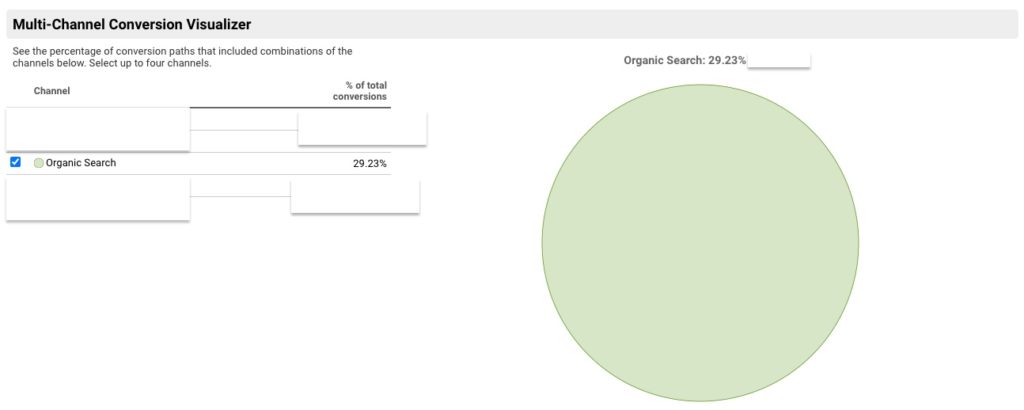
Screenshot taken from Google Analytics.
2. Conversion rates from April 30th 2021 to May 31st 2021 = 32.36% from organic search.

Screenshot taken from Google Analytics.
3. Conversion rates from May 31st 2021 to June 30th 2021 = 35.71% from organic search.
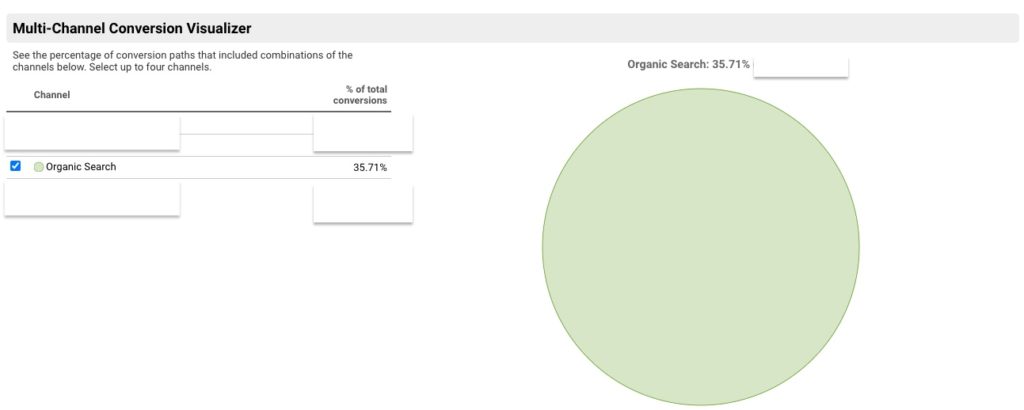
Screenshot taken from Google Analytics.
4. Conversion rates from June 30th 2021 to July 31st 2021 = 42.57% from organic search.
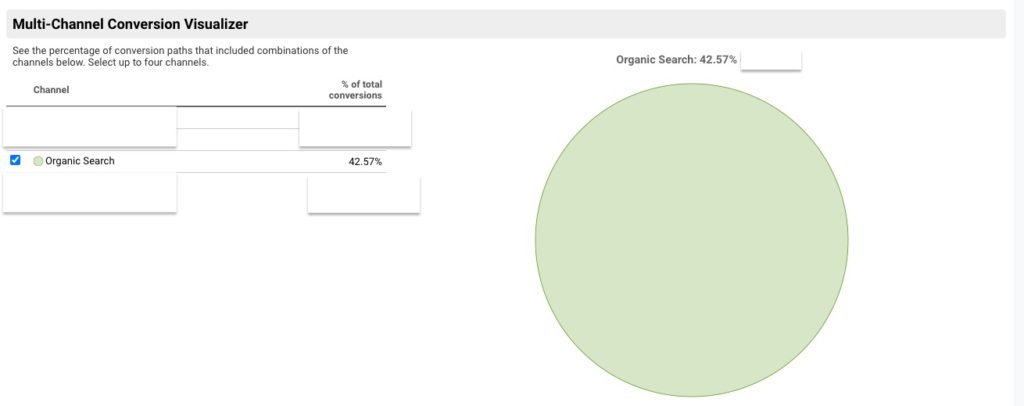
Screenshot taken from Google Analytics.
5. Conversion rates from July 31st 2021 to August 31st 2021 = 42.56% from organic search.
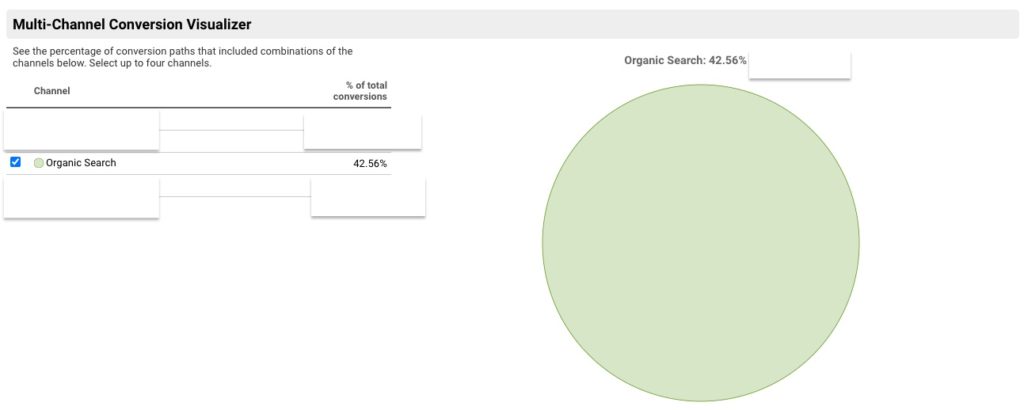
Screenshot taken from Google Analytics.
6. Conversion rates from August 31st 2021 to September 30th 2021 = 43.05% from organic search.
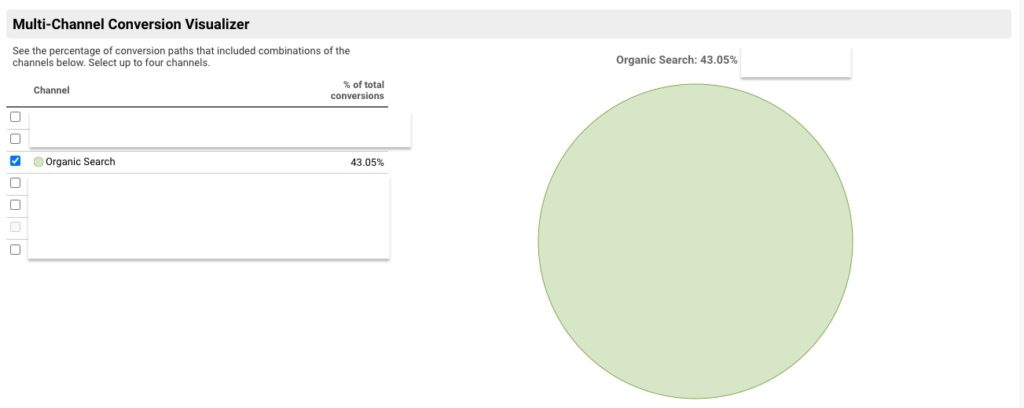
Screenshot taken from Google Analytics.
7. Conversion rates from September 30th 2021 to December 31st 2021 = 32.9% from organic search.
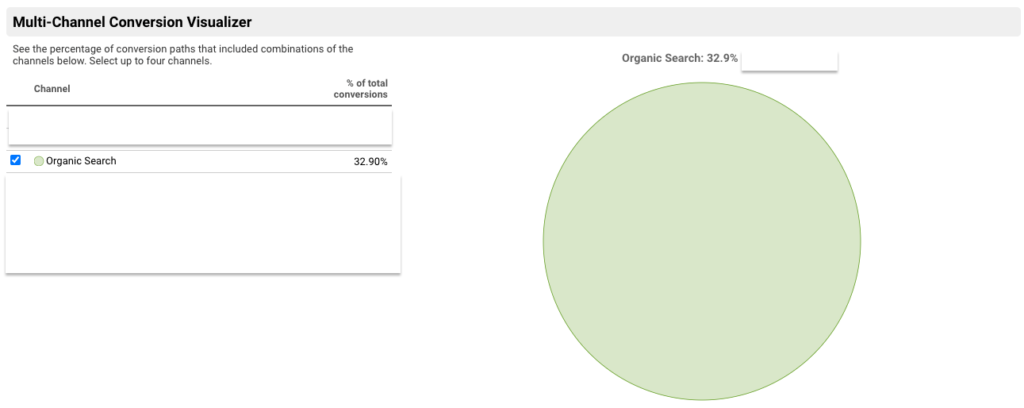
Screenshot taken from Google Analytics.
Around 1 Year Later: Monthly Organic Search Traffic Comparison
Here are the differences in monthly organic search traffic from February 2021 to February 2022.
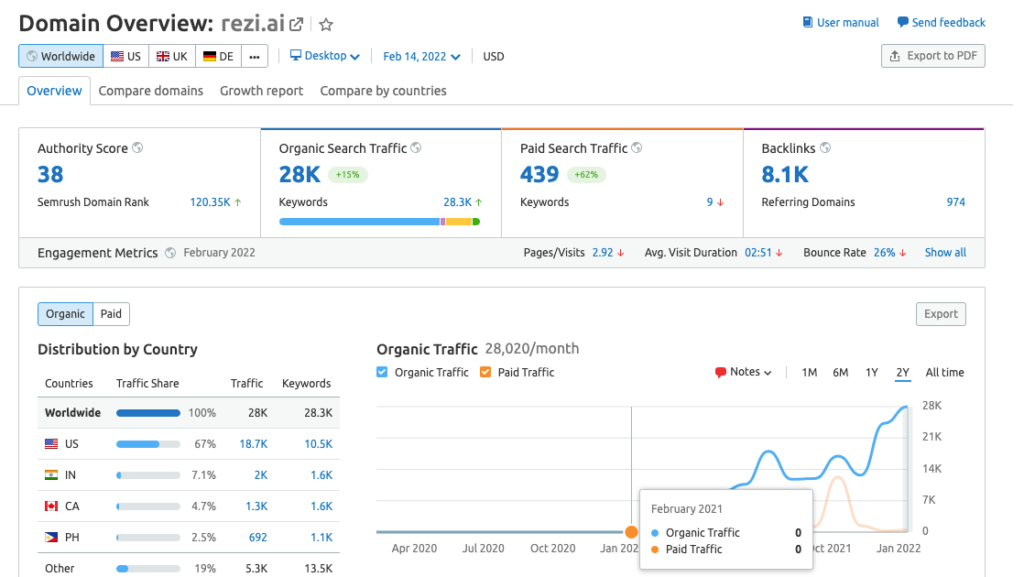
February 2021 – 0 monthly organic search traffic (SEMrush).
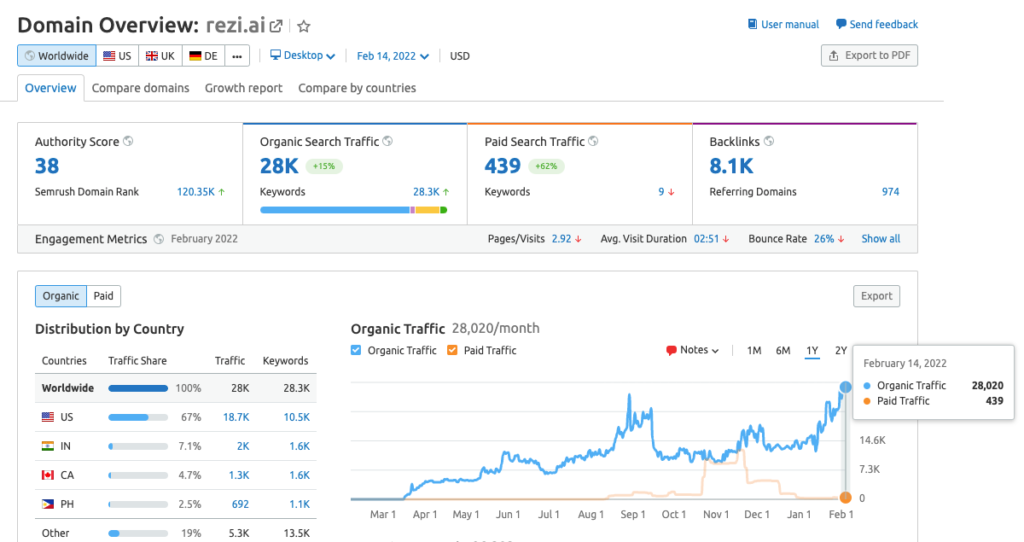
February 2022 – 28,020 monthly organic search traffic (SEMrush).
Within the same month (February 2022), we also experienced a surge that led to an increase in organic search traffic by 18,500, which is a 66.07% increase.
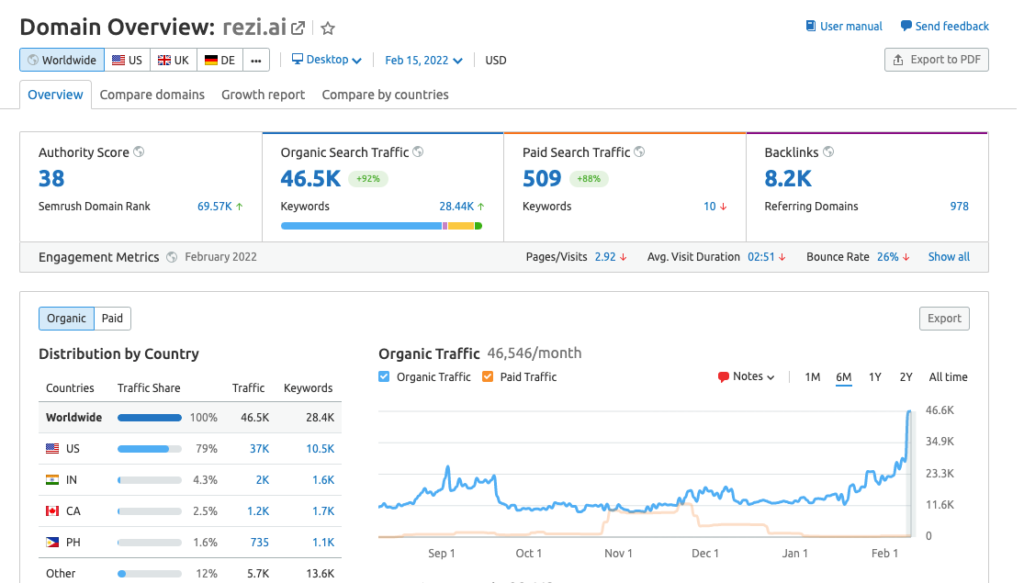
February 2022 – 46,500 monthly organic search traffic.
In March 2022, we also saw a 39.6% increase in the daily average of new paying customers.

What My Client Had to Say
“Working with Astley has been like SEO on autopilot. We knew SEO was going to be a key channel for our growth but executing on a strategy was daunting and we didn’t know where to start. After working with him, we’re seeing organic sign up increase over 30% per month as a result of the content that we’ve consistently published.
Astley is a pleasure to work with, providing consistently high-quality work and ensuring each thing is done reliably and transparently. He’s fully aware of driving better quality results for Google which is why he is an integral part of our digital team. Astley is also driven to be swift and accurate, and he’s excellent at communicating to ensure the company is updated on the latest trends.
I can highly recommend him. The long-form content has been key for good results – articles are in-depth, on-point and easily digestible. Economically, the ROI on SEO is huge and Astley has created a great organic presence for Rezi!”
Jacob Jacquet, CEO, Rezi.ai
Key Takeaways
Here’s a summary of my process:
- Brainstorm content ideas based on product USPs and customer pain points
- Refine those content ideas into keywords that your target audience would most likely enter into search engines
- Introduce an alternative content angle that’s different from competitors to make it clear you have something new/different to offer in your article (which makes your content more interesting)
- Deliver on the search intent by giving users the answers that they’re looking for
- Weave your product into those answers via product-led storytelling to position yourself as a solution to the core pain point (which can lead to conversions or at least raise product awareness)
- Repeat the process and stay consistent with content publishing
Want to Be My Next Case Study?
I’m always on the lookout to make more new case studies. If you’re interested in getting me to work on your website content, I’d love to have a chat to see if we’d be a good fit for each other.
Please get in touch with me at astley@minimalist-copy.com.
I’m also open to working on one-time projects. Please don’t hesitate to get in touch, I’m all ears if you have any questions!
